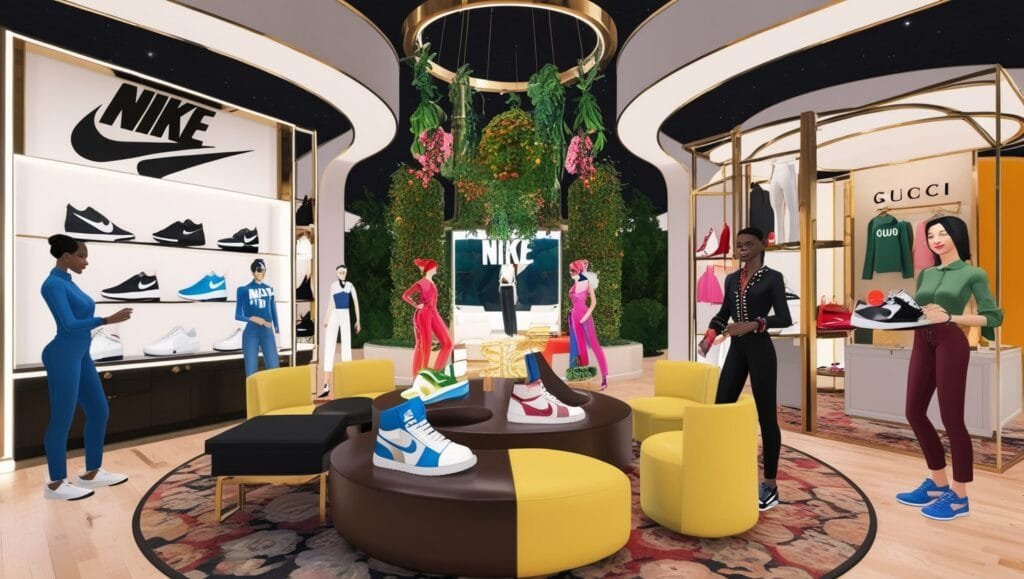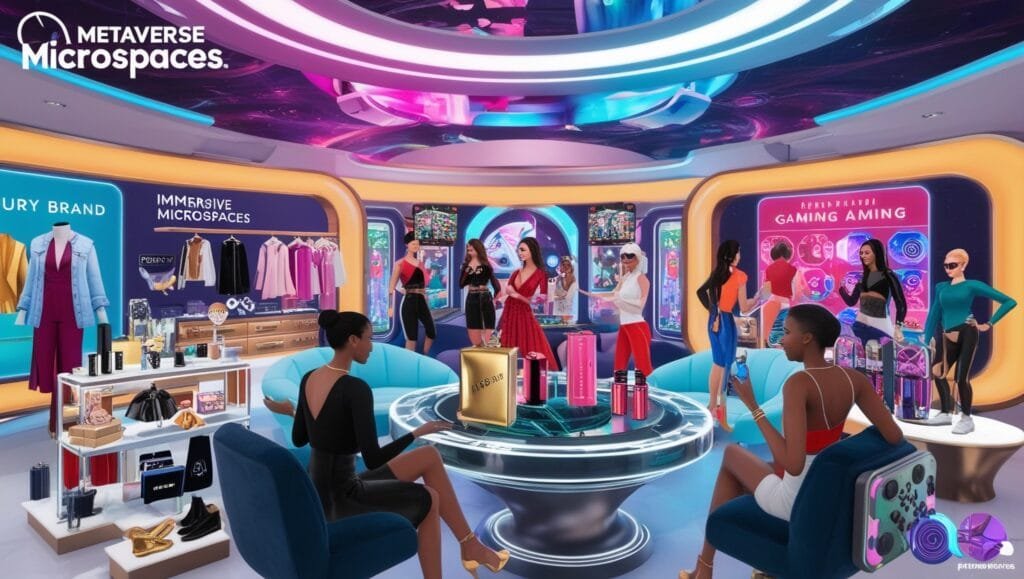The metaverse has given companies a universe of chances to interact with consumers on a deeper, more meaningful level. Micro Spaces smaller, customized settings that might act as hubs for distinctive brand experiences are found within this large digital cosmos. But what are micro spaces, and how may they become essential for better user-brand relationships?
This blog looks at how companies may use metaverse microspaces to interact personally, involve their audience, and inspire long-term devotion. Learn more about marketing blogs by sky creators!
What Are Microspaces in the Metaverse?

Particularly created for targeted user interactions, micro spaces are personal, concentrated places inside the metaverse. Microspaces give marketers the chance to involve consumers in a more intimate environment than big-scale virtual arenas or open-world environments, therefore providing a specific and carefully chosen experience.
Examples of micro spaces include:
- Virtual boutiques displaying speciality goods.
- immersive lounges that allow brand communities to meet.
- Designed gaming experiences consistent with brand identification.
These environments are about really interacting with a certain target segment, not about trying to reach everyone. Learn more about microspace marketing.
The Growing Appeal of Micro Spaces for Brands

Micro Spaces are a concept born by the increased need for immersive user experiences and tailored marketing. Microspaces provide a means to accommodate particular interests and preferences in a time when consumers want more than one-size-fits-all messaging.
Key Benefits of Micro Spaces:
Hyper-Personalization
Micro Spaces let companies design settings fit for their target market. A luxury firm might, for instance, create a slick, private metaverse showroom that would make consumers feel like VIPs.
Deeper Engagement
Users are more inclined to interact in a targeted place fit for their interests. Better interaction follows from this than from vast, impersonal virtual worlds.
Community Building
Microspaces let brands build communities of like-minded people with brand-related interests, values, or hobbies.
How Can Brands Leverage Micro Spaces Effectively?
Brands must use strategy if they are to maximize microspaces in the metaverse. Their approach is as follows:
1. Define Clear Objectives
Brands have to know their objectives before building a microspace. Are they trying to build a community, raise brand recognition, or boost product sales? Clearly defined goals guarantees the microspace’s design to satisfy certain user requirements.
For Example:
Engaging with the brand, a fitness business may design a virtual gym where consumers may visit live workout sessions, test on virtual gear, and get health advice.
2. Focus on Personalization
The capacity of a microspace to make users visible and valuable defines its success. One can personalize anything by:
- Specialized material for several user profiles.
- Interactive components enabling user customizing of their experience.
- Microspace AI-driven recommendations.
3. Integrate Gamification
One very effective approach to improve user involvement is gamification. Interactive games, tests, or challenges meant for participation can all be included into micro spaces.
Example:
In its microspace, a beverage company might set up online treasure hunts paying consumers with NFTs (Non-Fungible Tokens) with special coupons.
4. Offer Exclusive Experiences
Unique, one-of-a-kind interactions attract users. Micro Spaces let companies present limited-edition product introductions, virtual meet-and-greets with influencers, or behind-the-scenes tours of their facilities.
5. Leverage Data Analytics
Microspaces reveal important aspects of user behavior. Tracking interactions, preferences, and degrees of involvement helps companies hone their strategy.
Tip: Understanding what appeals to your audience with metaverse analytics tools can help you to always enhance your microspace.
Case Studies: Brands Excelling with Micro Spaces

Here are several businesses using metaverse microspaces in tremendous success:
1. Nike’s Nikeland
Nike developed Nikeland, a microspace inside Roblox where users may design their own virtual footwear, explore branded content, and even engage in game play. Combining gamification with community building in this microspace helps younger viewers develop brand loyalty.
2. Gucci Garden
Gucci Garden is a microspace starting on Roblox run by luxury fashion company Gucci. This area offered an interactive experience fit for Gucci’s brand identity and displayed special digital goods.
Key takeaway: Exclusive micro spaces could increase the attraction and reputation of a company.
3. Adidas’ Virtual Showrooms
To highlight limited-edition items and involve consumers via immersive storytelling, Adidas built virtual showrooms. These micro spaces let consumers relate to the brand in a way that conventional stores could not provide.
Building Deeper Connections with Users

Making microspaces in the metaverse is mostly meant to help to establish closer relationships with consumers. Here’s how companies might accomplish this:
Foster Authentic Interactions
Authenticity is important to users even in virtual environments. Companies might:
- Organize live events including professionals or brand champions.
- Promote originality in the microspace.
- Real-time actively interacting with consumers.
Encourage Community Involvement
Micro Spaces let companies bring their communities together. Group initiatives, group conversations, or shared obstacles all contribute to foster a feeling of belonging.
Example:
A beauty firm might design a virtual lounge where people trade makeup advice and tutorials, therefore strengthening relationships around common interests.
Emphasize Storytelling
One effective approach to engage consumers is by presenting a story. Micro Spaces let companies craft immersive stories that enthralls their target market.
Tip: Tell your metaverse brand story using interesting images, interactive components, and soundscapes.
Overcoming Challenges
Micro Spaces have great potential, however there are issues to take into account even:
1. Accessibility
Not every user will have the technology or metaverse knowledge needed to visit microspaces. Companies should make sure their online habitats are easily navigable.
2. Data Privacy
Gathering and evaluating user data inside microspaces has to follow privacy rules if one is to establish confidence.
3. Initial Investment
Establishing good microspaces calls both time and money. Still, the long-term advantages usually exceed the expenses.
The Future of Micro Spaces in the Metaverse

Micro Spaces will become ever more significant in brand marketing as the metaverse develops. In a crowded digital terrain, the capacity to build intimate, customized settings will differentiate brands.
Looking ahead, microspaces’ possibilities will be even more enhanced by developments such augmented reality (AR) integrations and AI-powered customizing.
Final Thoughts
Microspaces in the metaverse present marketers with a great chance to involve consumers in a customized, relevant manner. Focusing on hyper-personalization, gamification, and community development can help companies to use these private areas to generate unforgettable events and strengthen long-term loyalty.
Micro Spaces in the metaverse could be the secret to releasing deeper connections and creating enduring bonds with your audience in a world when user attention is the most important money.





